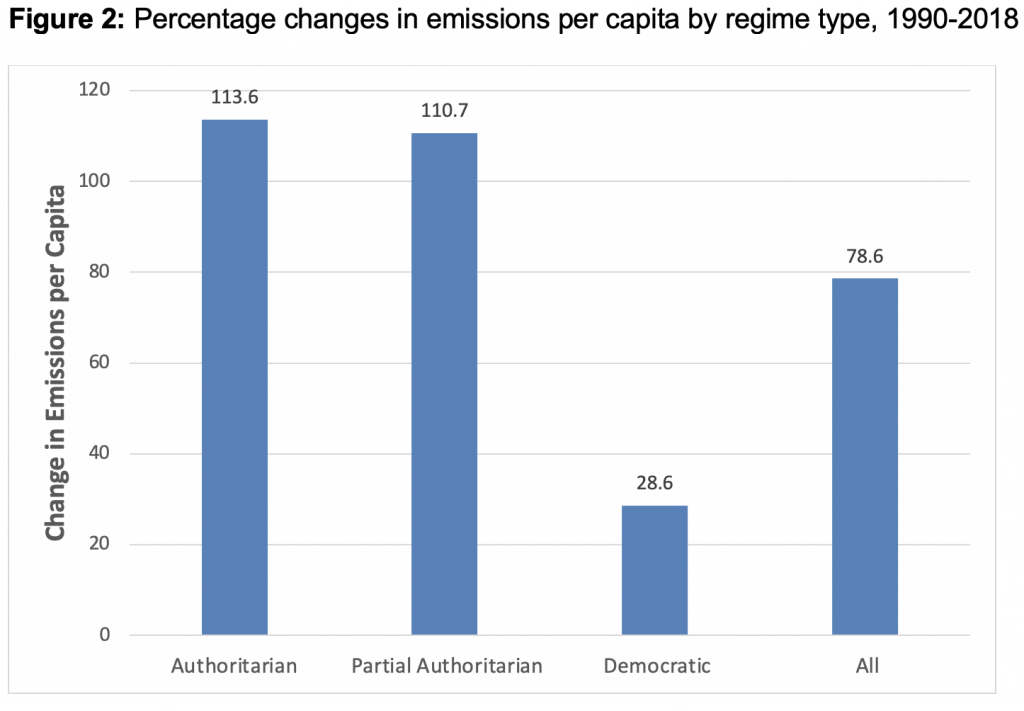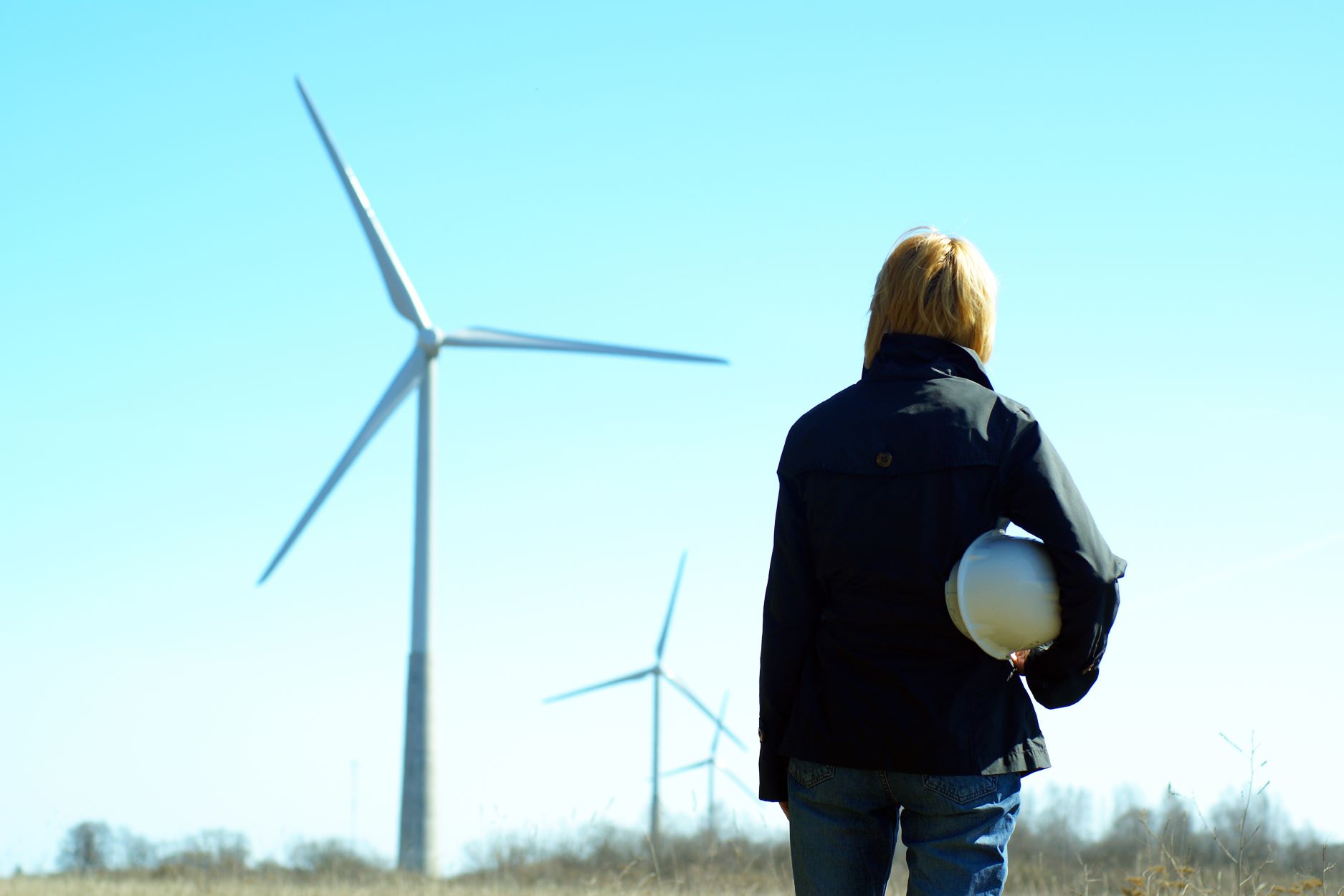 Paul Whiteley highlights the link between a country’s wealth and democratic status and its CO2 emissions.
Paul Whiteley highlights the link between a country’s wealth and democratic status and its CO2 emissions.
Britain is hosting the COP26 climate change conference in Glasgow and there has been no shortage of warnings about the dire consequences of allowing the average rise in global temperatures to exceed 1.5 degrees centigrade. But there are formidable barriers to achieving this, including the increasingly strained relations between the United States and China, the two biggest polluters. There is also the perennial problem of leaders like Jair Bolsonaro, the President of Brazil, who either denies the problem or in any case would like everyone else to deal with it.
However, there is also an issue which is often unrecognised in these debates, something which can be described as the ‘climate change trap’. This is the fact that countries need to achieve a certain level of development before they can afford to tackle the issue. While poor countries do not emit much in the way of greenhouse gases, as they grow richer their emissions rapidly increase. The transition from poverty to middle income status for a country means concentrating on investment and development, leaving little in the way of resources to deal with climate change. Plans have been put in place to compensate developing countries to the extent of $100 billion a year, but unfortunately they have not been delivered. In addition, while these sums appear large, they are also a fraction of what is actually needed.
Figure 1 illustrates how the climate change trap works. It shows the effect of Gross Domestic Produce per capita on carbon dioxide emissions per capita in 2018. The data is for 178 countries and comes from the World Bank. The average level of per capita emissions across these countries in that year was 4.27 tons. However, it varied widely from 0.03 tons in the Democratic Republic of the Congo to 32.4 in Qatar. The summary curve shows that emissions rise rapidly as countries climb out of poverty and then it tends to level off when they reach middle income status.
The bunching of low-income countries around the summary curve shows that if they want to climb out of poverty, they have to increase carbon emissions. But as they reach middle-income or high-income status, they have a lot more choice about how to deal with emissions. This produces large variations across countries. This is illustrated by the examples of Germany and Canada, which had rather similar GDP per capita incomes of $47,787 and $46,455 respectively in 2018, yet Germany’s emissions were 8.6 tons of CO2 per capita whereas Canada’s was 15.6 tons, almost twice as much.
Overall, China is the biggest polluter on the planet followed by the United States but viewed in per capita terms China had a GDP of $9,976 in 2018, whereas the US’s was $63,064. This creates a significant problem since China is some distance from becoming a high-income country. It is still a long way from the sweet spot where it becomes much easier to tackle emissions.
Of course, tackling this issue is a matter of political will as much as having resources to deal with it. Equally, there are rich countries which have the resources but not the will. As Figure 1 shows, Qatar is a large outlier; Saudi Arabia and the United Arab Emirates are also in this group of high emitters. But it is also true that the United States, Australia, and Canada all produced more than 15 tons per capita of greenhouse gases in 2018. In contrast, Britain produced 6.4 tons per capita which is above average but not by as much as these other Anglo-Saxon model countries.
One of the ways of improving the situation is to promote democracy. We know that democracies have fared much better at dealing with the COVID-19 pandemic than have autocratic governments. So how have democracies coped with climate change even though some of them are high emitters? The Freedom House think tank classify regimes across the world in relation to their democratic characteristics. This is judged by factors like the existence of freedom of speech, free and fair elections, the right for citizens to participate in politics, and government respect for the rule of law. They classify all countries into three categories: authoritarian, partially authoritarian and democratic.
Figure 2 examines the percentage change in tons of CO2 emissions per capita across the world between 1990 and 2018 using the Freedom House categories. Overall, emissions rose by nearly 79% over this period, but there were huge differences between democracies and authoritarian regimes. In the authoritarian regimes, which included countries like Russia and China, emissions rose by nearly 112%. In partial authoritarian regimes, like Indonesia, the increase was almost the same at just over 110%.
However, in democracies the increase was just under 29%. Of course, other factors are at work in explaining this, but the existence of a democratic regime really makes a difference. This is partly because democratic governments are more responsive to demands from their people to do something about environmental degradation and pollution. This often becomes a serious issue in rapidly growing countries and authoritarian regimes can more easily ignore it in pursuit of other goals, such as growth at all costs.
The Freedom House data shows that democracies have been on the retreat over the last couple of decades. Their recent report shows that since 2005, the number of authoritarian countries has increased and the number of democracies has declined. The implication is that if there was a resurgence of democracy around the world, this would greatly help in the battle against climate change.
____________________
 Paul Whiteley is Professor in the Department of Government at the University of Essex.
Paul Whiteley is Professor in the Department of Government at the University of Essex.
Photo by Kelly Sikkema on Unsplash.









